What İs Gluten?
Gluten is a type of protein found in wheat, barley, and rye. It is what gives dough its elasticity and helps it rise. Gluten is not found in all grains, but it is found in the ones most commonly used in the western diet. People with celiac disease or gluten sensitivity must avoid gluten because it can cause damage to their small intestine.
There are many gluten-containing foods that should be avoided on a gluten-free diet, including bread, pasta, cereal, and beer. It is important to read food labels carefully because gluten can be hidden in many foods, such as marinades, sauces, and processed meats.
It is estimated that 1% of the population has celiac disease, an autoimmune disorder that causes damage to the small intestine when gluten is consumed. People with celiac disease must follow a strict gluten-free diet to avoid symptoms such as abdominal pain, diarrhea, and fatigue. There are also people who do not have celiac disease but experience symptoms when they consume gluten. This is known as non-celiac gluten sensitivity, and the symptoms can vary from person to person.
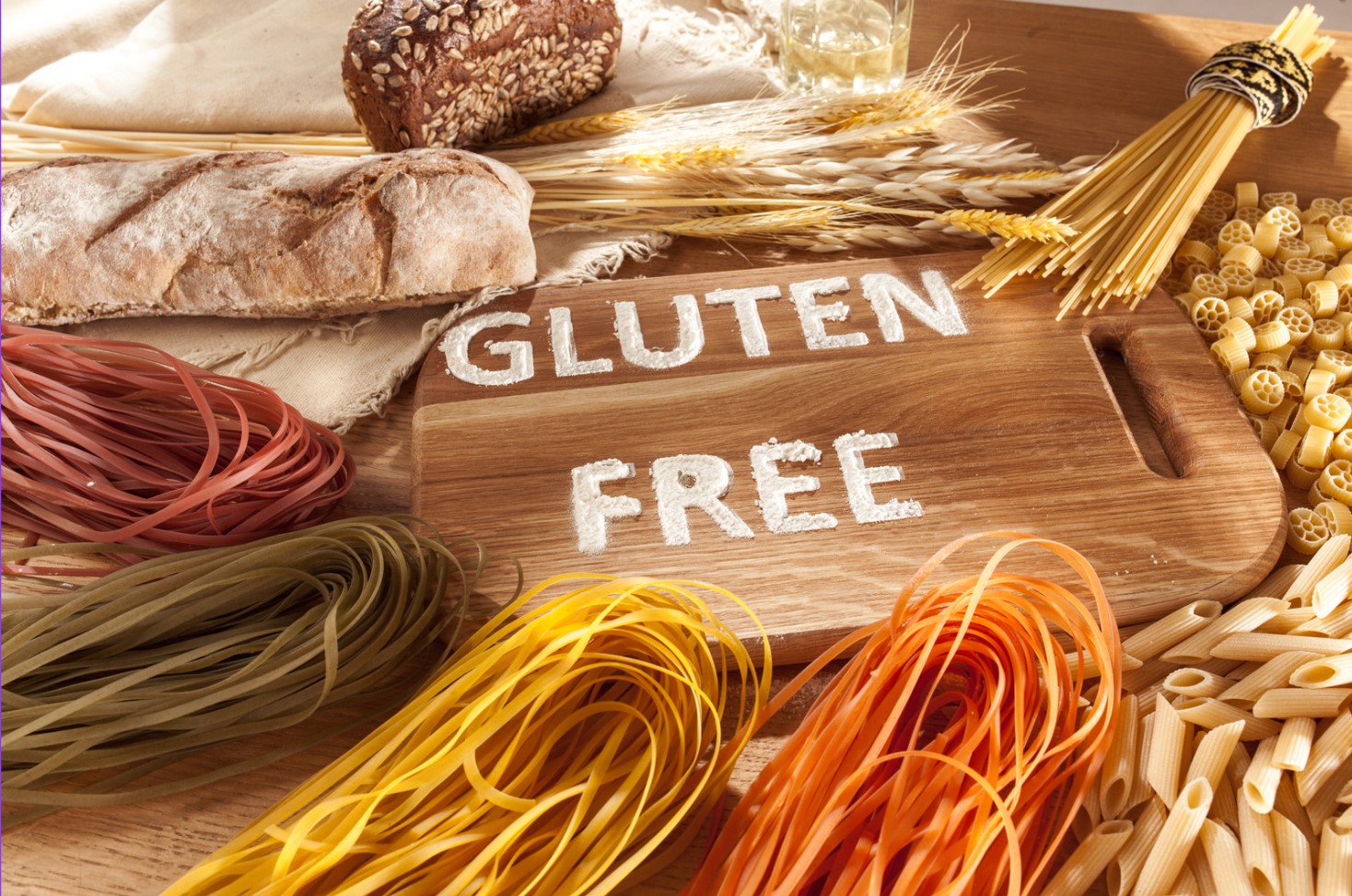
What İs A Gluten-Free Diet?
A gluten-free diet is a special diet that excludes gluten from your meals. Gluten is a kind of protein found in many different grains such as wheat, barley, and rye. It can be difficult to follow this diet as gluten is present in many common foods, including bread, pasta, and cereals. However, people with celiac disease, wheat allergies, or gluten sensitivity must avoid gluten, so a gluten-free diet is necessary.
A gluten-free diet involves avoiding all gluten-containing foods and replacing them with gluten-free alternatives. Gluten-free foods are those that do not contain gluten, and there are many different kinds available. Fresh fruits and vegetables, plain meats, poultry, and fish, and gluten-free grains such as rice and quinoa are all good options. Other gluten-free foods include potatoes, nuts, legumes, and dairy products that are not flavored or contain added ingredients.
When starting a gluten-free diet, it is important to read food labels carefully. Many processed foods contain hidden gluten, so it is important to be aware of what is in the food you are eating. In addition, eating out can be more challenging, as gluten may be present in restaurant dishes. It’s always best to check with the server or chef to make sure that the meal you choose is gluten-free.

Who Should Follow A Gluten-Free Diet?
Gluten-free diet has become quite popular over the last few years, and many people are claiming the benefits of following this dietary restriction. However, not everyone needs to, or should, follow a gluten-free diet. Below we will discuss the people who should follow this dietary restriction.
- Celiac disease patients: Celiac disease is an autoimmune disorder that damages the small intestine when gluten is consumed. It affects about 1% of the population, and the only treatment is to follow a strict gluten-free diet.
- Non-celiac gluten-sensitivity: Some people experience digestive symptoms after consuming gluten-containing foods, but they don’t have celiac disease. This condition is called non-celiac gluten-sensitivity, and following a gluten-free diet may improve their symptoms.
However, it’s important to note that following a gluten-free diet without proper diagnosis can be harmful and deprive the body of essential nutrients found in gluten-containing foods.
- Avoid self-diagnosis: If you suspect that you have celiac disease or non-celiac gluten-sensitivity, consult with a healthcare professional before going on a gluten-free diet.
- Educate yourself: Learn about hidden sources of gluten, cross-contamination, and appropriate substitutes to prevent nutrient deficiencies.
- Consult with a registered dietitian: A registered dietitian can help you create a well-balanced gluten-free meal plan and ensure that you’re getting all the necessary nutrients.
In conclusion, a gluten-free diet is necessary for individuals with celiac disease or non-celiac gluten-sensitivity. However, following a gluten-free diet without proper diagnosis can harm one’s health. It’s important to consult with a healthcare professional and a registered dietitian before making any dietary changes.
Benefits Of A Gluten-Free Diet.
A gluten-free diet is one that excludes the protein gluten. Gluten is found in grains such as wheat, barley, and rye. People with celiac disease, gluten sensitivity, or wheat allergy can benefit from a gluten-free diet. Here are some of the benefits of following a gluten-free diet:
- Improved Digestive Health: Gluten can damage the lining of the small intestine in individuals with celiac disease, leading to malabsorption of nutrients (1). Eliminating gluten from the diet can help improve digestion and nutrient absorption, leading to better overall health.
- Reduced Inflammation: Gluten can cause inflammation in the body, which can worsen conditions such as arthritis, multiple sclerosis, and other autoimmune disorders. A gluten-free diet can help reduce inflammation and alleviate symptoms of these conditions (2).
- Weight Management: A gluten-free diet can help with weight management, as it eliminates many high-calorie, high-fat, and high-sugar foods that often contain gluten. However, it is important to still consume a well-balanced diet to maintain a healthy weight (3).
- Improved Cardiovascular Health: Many gluten-free foods are made with whole grains such as quinoa, brown rice, and amaranth, which are rich in fiber and can help reduce cholesterol levels and lower the risk of heart disease (4).
- Improved Mental Health: People with celiac disease often experience depression and anxiety, which can improve with a gluten-free diet (5). Additionally, some research suggests that gluten may worsen symptoms of ADHD and autism in some individuals (6).
In conclusion, while a gluten-free diet may not be necessary for everyone, it can provide many benefits to individuals with celiac disease, gluten sensitivity, or wheat allergy. It can improve digestive health, reduce inflammation, aid in weight management, improve cardiovascular health, and even improve mental health.
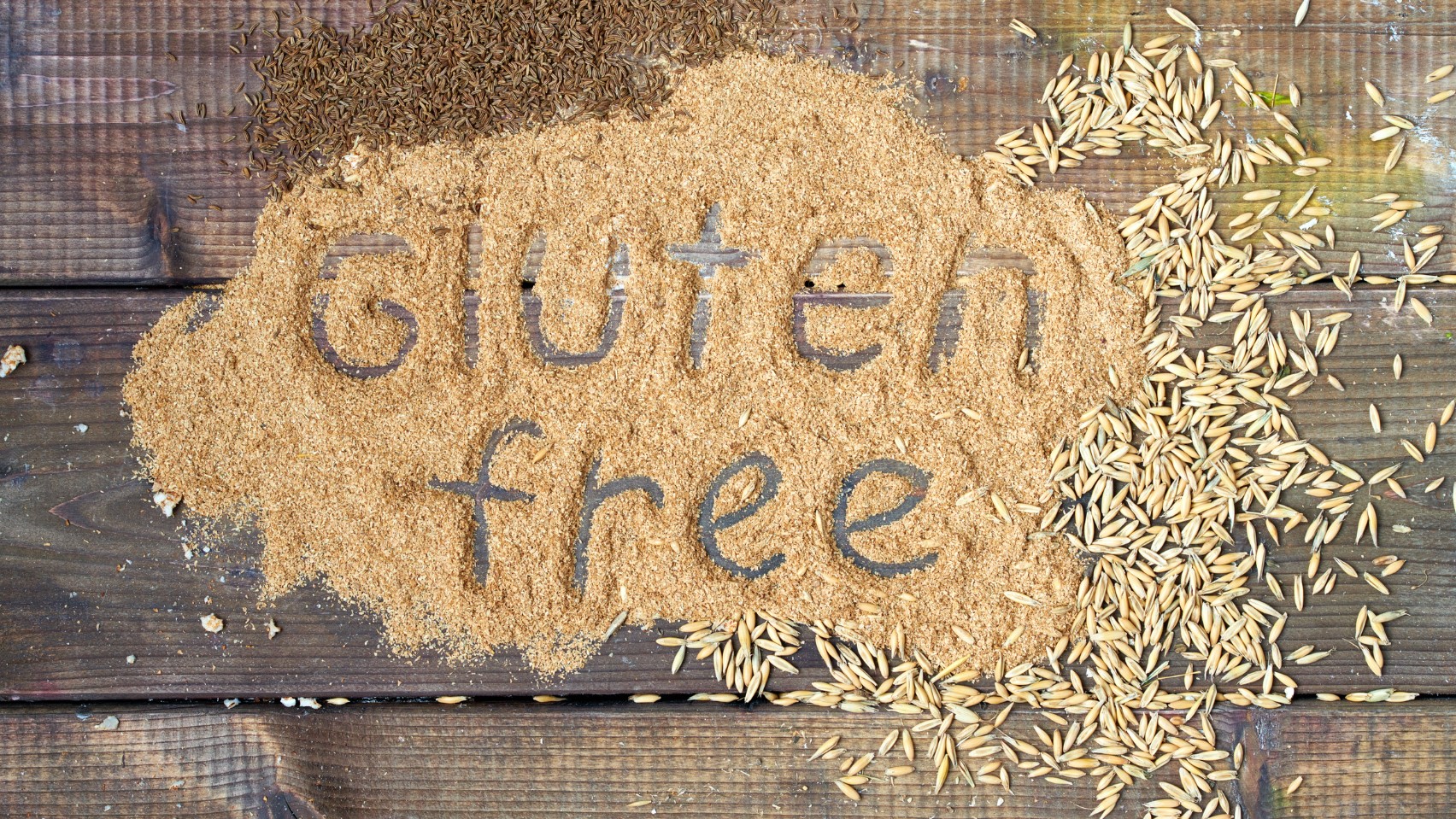
Potential Risks Of Gluten-Free Diet.
Following a gluten-free diet can seem like a great idea for people looking to improve their health, but it is not as simple as it may sound. In fact, there are some potential risks associated with going gluten-free, especially if done without proper guidance from a healthcare professional.
One of the major risks of a gluten-free diet is that it can lead to nutrient deficiencies. Many gluten-containing foods are sources of important nutrients like fiber, iron, zinc, and B vitamins. When these foods are eliminated from the diet, it can be difficult to replace them with nutrient-dense alternatives, which can lead to health problems over time. For example, a lack of fiber can cause constipation and digestive issues, while low iron levels can lead to anemia.
Another potential risk of a gluten-free diet is that it can lead to weight gain. While some people may experience weight loss initially after going gluten-free, many gluten-free products are higher in calories and sugar than their gluten-containing counterparts. This can lead to weight gain over time, especially if these products are consumed in large amounts.
- One way to mitigate these risks is to work with a registered dietitian or other healthcare professional to ensure that the gluten-free diet is well-balanced and provides all the necessary nutrients.
- Another strategy is to focus on naturally gluten-free foods, such as fruits, vegetables, lean proteins, and whole grains like quinoa and rice, rather than relying on processed gluten-free products.
- It is also important to read food labels carefully and be aware of hidden sources of gluten, such as soy sauce and certain dressings and sauces.
| Benefit of gluten-free diet | Potential risk of gluten-free diet |
|---|---|
| May improve symptoms of celiac disease and gluten sensitivity. | May lead to nutrient deficiencies if not well-planned. |
| May relieve symptoms of other autoimmune and inflammatory conditions. | May lead to weight gain if relying on processed gluten-free products. |
| May encourage overall healthier food choices. | May be more expensive and limit food choices when dining out and traveling. |
In conclusion, while a gluten-free diet may provide some health benefits for certain individuals, it is important to be aware of the potential risks associated with this way of eating. Taking a well-informed and balanced approach to a gluten-free diet can help mitigate these risks and promote optimal health.
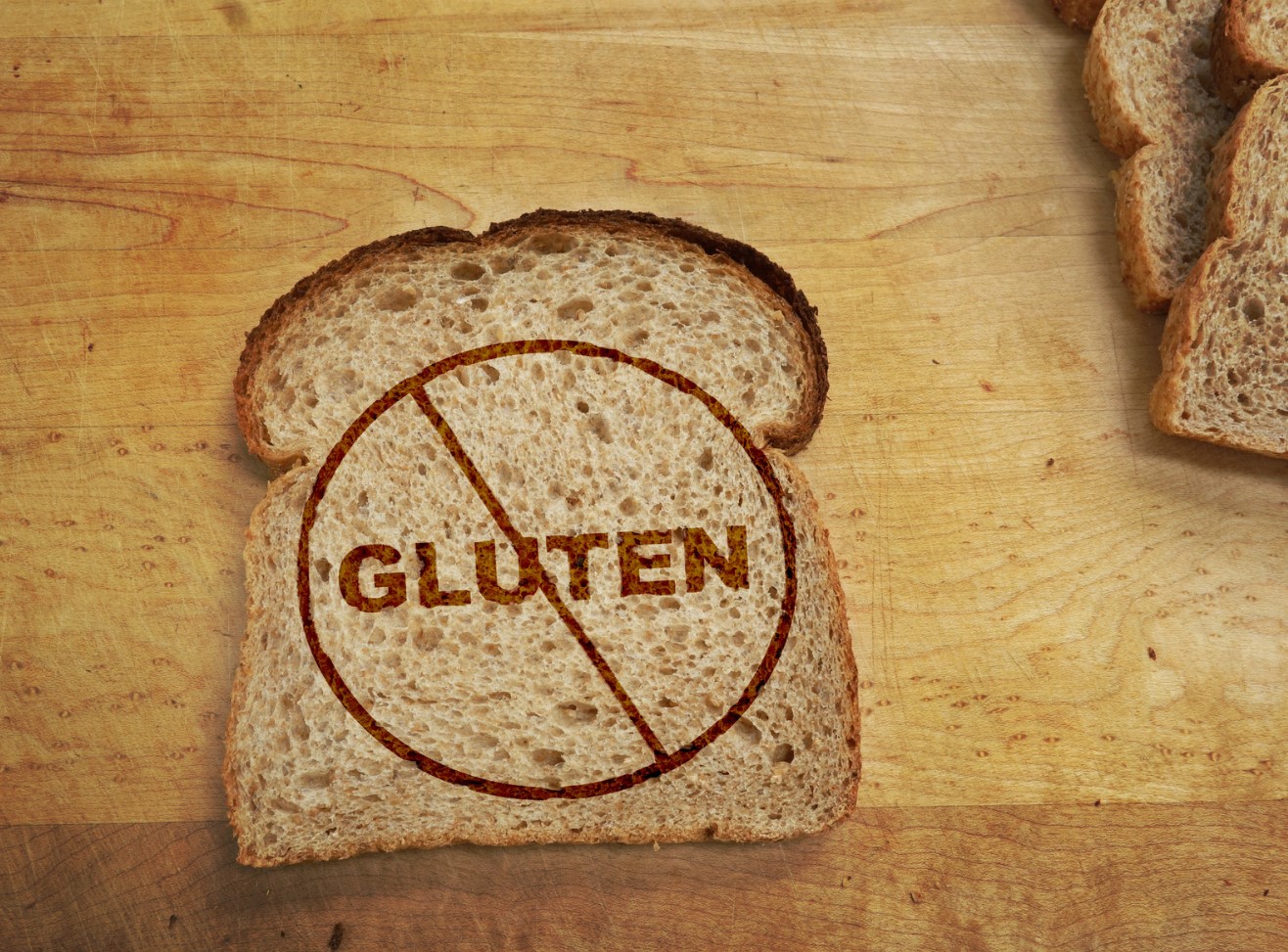
Gluten-Free Meal Planning.
Following a gluten-free diet can be challenging for many people. It requires careful planning, smart choices, and an awareness of the hidden sources of gluten in foods. Gluten-free meal planning can seem overwhelming, but with a little effort and some basic knowledge, it can become a seamless part of your everyday life.
One of the keys to successful gluten-free meal planning is to focus on whole, unprocessed foods. These include fruits, vegetables, lean proteins, nuts, and seeds. Make a list of your favorite gluten-free foods, and incorporate these into your meal planning. Plan your meals around the foods you enjoy, so that you are more likely to stick with your gluten-free lifestyle.
In addition, it is important to read labels carefully. Many processed foods contain hidden sources of gluten, such as wheat, barley, and rye. Check the ingredient list for these items, and avoid products that contain them. Be particularly vigilant when shopping for snacks and packaged foods, which are often the biggest culprits when it comes to hidden gluten.
| Meal | Gluten-Free Option |
|---|---|
| Breakfast | Eggs, gluten-free toast, fruit |
| Lunch | Grilled chicken salad with gluten-free dressing |
| Dinner | Baked salmon with roasted vegetables |
Meal prepping can also make gluten-free meal planning easier. Set aside time each week to prepare meals in advance, so that you always have a healthy, gluten-free option on hand. Consider investing in a slow cooker or Instant Pot, which can make meal prep even simpler. Finally, don’t be afraid to reach out for support. Join a support group or connect with others who are following a gluten-free diet. They can provide helpful tips and advice for staying gluten-free while enjoying delicious, satisfying meals.
Gluten-Free Food Options.
Going gluten-free can be challenging, especially when it comes to finding the right food options. Gluten is a protein found in wheat, rye, and barley – which means a lot of common food items are off-limits for those who need to follow a gluten-free diet.
Fortunately, there are plenty of gluten-free food options available today, including fruits, vegetables, meat, fish, poultry, beans and legumes, nuts and seeds, and dairy. All of these food items naturally do not contain gluten, making them safe to eat for those who are gluten-intolerant.
If you’re looking for gluten-free grains, there are several options to choose from, including quinoa, rice, corn, millet, sorghum, and buckwheat. Be sure to check the packaging when buying these grains, as some brands may process their products in facilities that also handle wheat, rye, and barley, potentially contaminating them with gluten.
If you have a sweet tooth, there are many gluten-free dessert options available, including ice cream, cakes, brownies, and cookies. However, it’s important to note that some of these products may contain hidden gluten ingredients, such as wheat flour. Always read the ingredient list carefully before purchasing any packaged food items.
- Fruits
- Vegetables
- Meat
- Fish
- Poultry
- Beans and legumes
- Nuts and seeds
- Dairy
- Quinoa
- Rice
- Corn
- Millet
- Sorghum
- Buckwheat
| Gluten-Free Dessert Options | Description |
|---|---|
| Ice cream | Many varieties of ice cream are naturally gluten-free, and there are also many gluten-free ice cream flavors available in stores now. |
| Cakes | Bakeries that specialize in gluten-free cakes are readily available. In addition, many grocery stores offer delicious, gluten-free cake options in their bakery section. |
| Brownies | Many gluten-free brownie mixes available in stores now, and several easy-to-follow homemade recipes if you’re a big fan of baking. |
| Cookies | There are many different varieties of gluten-free cookies available in grocery stores or baking aisle now. |
The gluten-free diet can be a healthy, nutritious way of eating, as long as you concentrate on whole, unprocessed foods rather than pre-packaged or processed foods that are marketed as gluten-free. So, always choose fresh, whole foods and check the ingredient list carefully while buying packaged foods to maintain a healthy and balanced gluten-free diet.
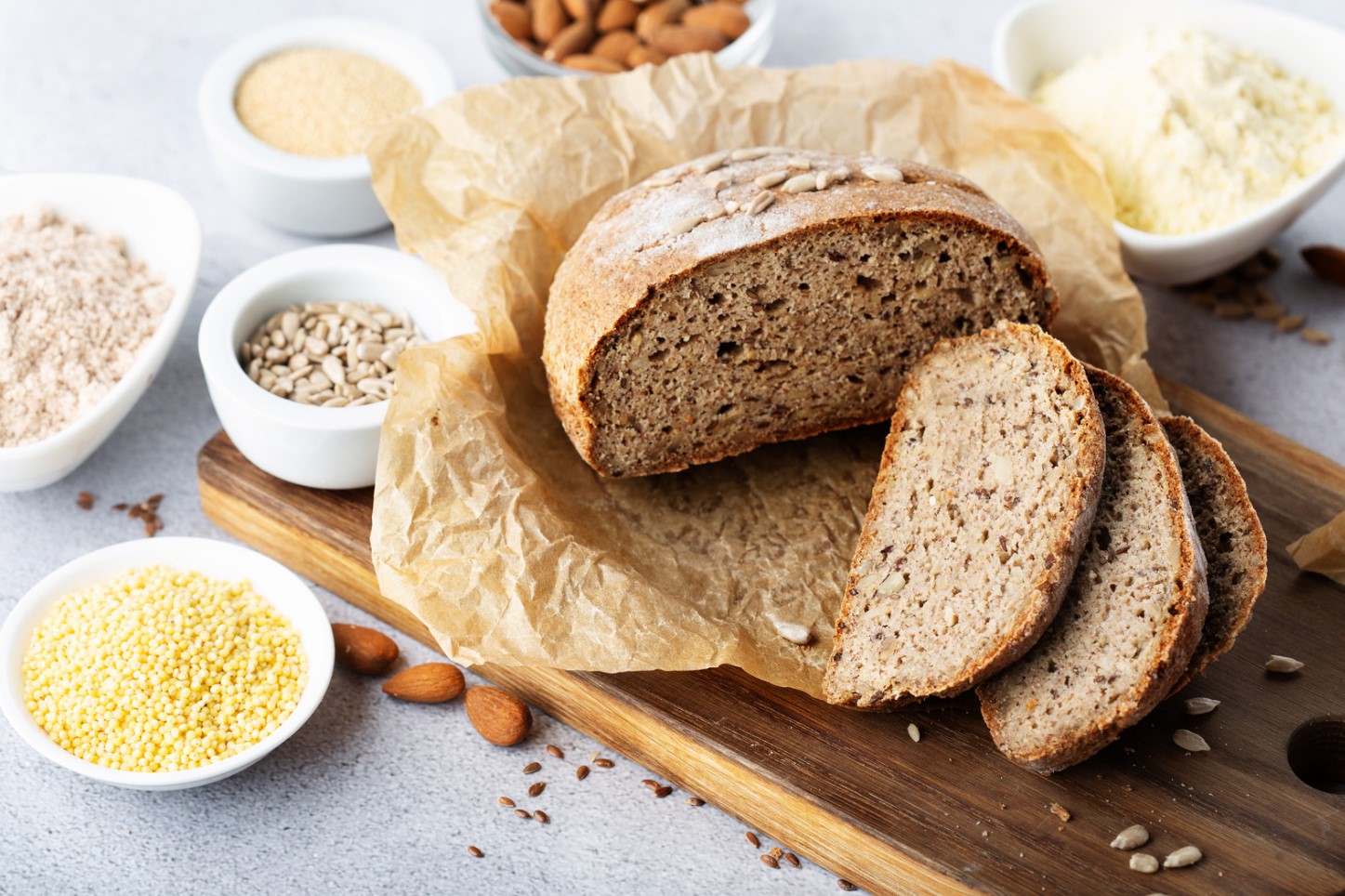
Gluten-Free Cooking Tips.
Gluten intolerance or Celiac disease affects millions of people worldwide. The only way to address this health issue is to completely eliminate gluten from the diet. Foods like wheat, rye, and barley should be avoided. This leaves people with limited food choices, but with the right cooking tips, you can still prepare mouth-watering dishes that are completely gluten-free.
When cooking gluten-free, it’s important to use separate utensils, cookware, and prep surfaces to avoid cross-contamination. Dishes to be cooked using gluten-free ingredients should have their own set of tools. It’s also vital to always read food labels to ensure that ingredients are safe to use. Flour alternatives like rice flour, almond flour, and coconut flour are great substitutes for gluten-containing wheat flour. These days, gluten-free bread and pasta are available in most supermarkets. They’re convenient, taste great, and make gluten-free cooking easier.
- Always use fresh ingredients when possible. Quality ingredients have less of a chance of containing gluten and can add more flavor.
- Experiment with gluten-free cooking techniques such as using alternative flours, preparing dishes ahead of time and using spices to add flavor.
- Use a food journal to document how your body responds to different foods. This can help you identify certain foods that cause discomfort and avoid them in the future.
Don’t hesitate to ask for guidance from the people in your community who also follow a gluten-free diet. They might have experience and tips that you can benefit from. In conclusion, gluten-free cooking requires diligence but it is highly rewarding. With a bit of creativity, you can come up with delicious meals and enjoy the health benefits of a gluten-free diet.
Gluten-Free Snack Ideas.
Are you on a gluten-free diet but struggling to find snack options that are both delicious and safe for you? Don’t worry, we’ve got you covered! Here are some gluten-free snack ideas to satisfy your cravings:
- Fruit and nut butter: Slice up some apples or bananas and dip them in your favorite nut butter. Almond butter or peanut butter are great options that are naturally gluten-free.
- Rice cakes with toppings: Rice cakes make a great base for all sorts of toppings. Try spreading some hummus and adding sliced cucumber, or top with cream cheese and smoked salmon for a savory snack.
- Rice crackers and dip: Rice crackers are a gluten-free alternative to regular crackers. Pair them with some guacamole or salsa for a tasty snack.
If you’re feeling more indulgent, here are some sweet treats that are also gluten-free:
- Gluten-free granola bars: Look for bars that are specifically marketed as gluten-free, or make your own at home with gluten-free oats, nuts, and dried fruit.
- Rice crispy treats: Make your own at home with gluten-free rice cereal, marshmallows, and butter.
- Dark chocolate: Many types of dark chocolate are gluten-free. Look for bars with at least 70% cacao for a healthy and satisfying snack.
Remember, just because a food is labeled as “gluten-free” doesn’t necessarily mean it’s healthy. It’s still important to read the nutrition label and ingredients list to make sure you’re choosing a snack that’s both safe and nutritious. Happy snacking!
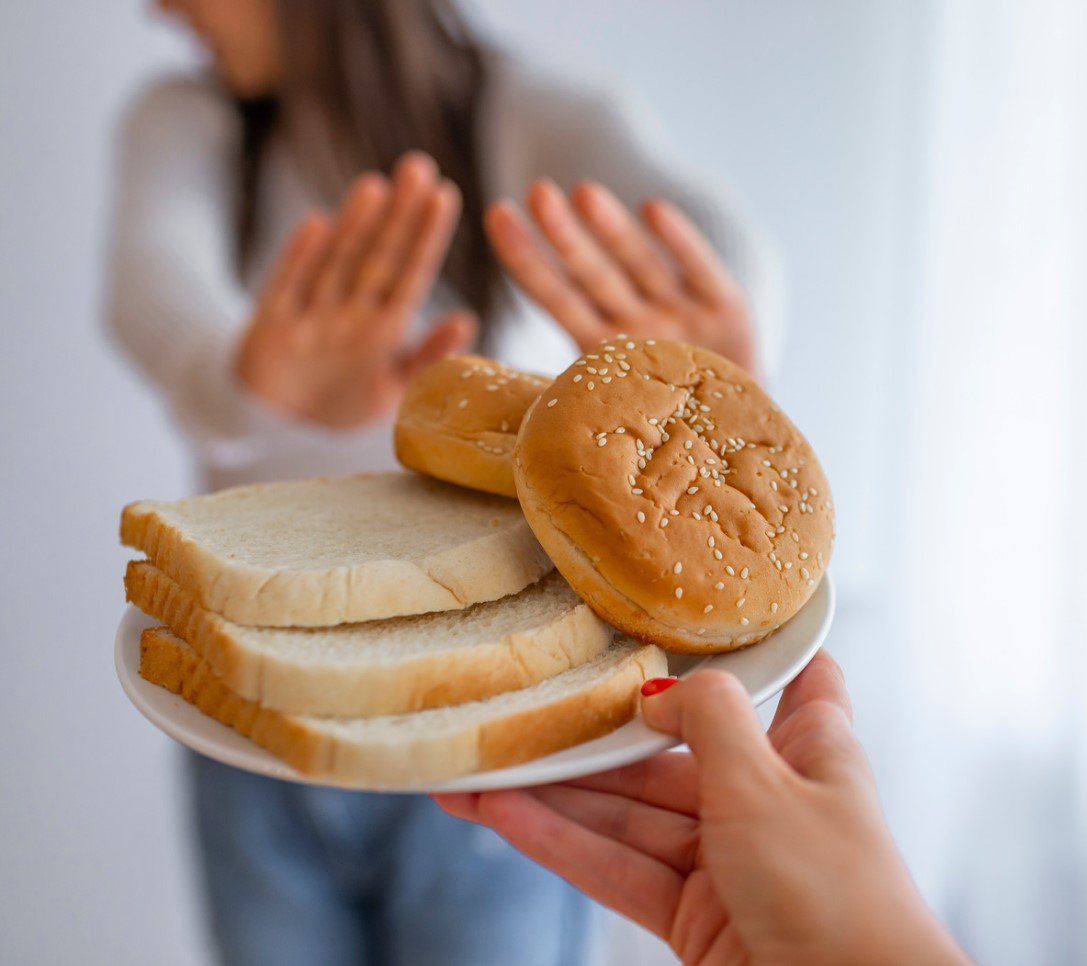
Gluten-Free Alcohol Options.
If you suffer from celiac disease or gluten intolerance, you are aware of the importance of avoiding gluten. However, you may not know that certain alcoholic beverages also contain gluten. This can be a problem for those who love to indulge in a drink every now and then. Fortunately, there are gluten-free alcohol options out there that you can try.
First and foremost, it is important to know which alcoholic beverages are naturally gluten-free. Wine, champagne, and brandy are considered safe, as they are made from grapes, which do not contain gluten. Additionally, most types of hard liquor, such as vodka, gin, and tequila, are also considered gluten-free as they are distilled from gluten-containing grains or other sources, which removes the gluten proteins.
However, beer is one of the most common alcoholic beverages that contains gluten. Most beer is made from barley, which is a gluten-containing grain. However, in recent years, there has been a rise in gluten-free beer options. Several brands produce gluten-free beer using sorghum, rice, or corn, which are gluten-free grains.
- Omission Pale Ale
- Bard’s Tale Beer
- Glutenberg IPA
- Redbridge Lager
- New Planet Beer Off Grid Pale Ale
If you prefer spirits or cocktails, you must ensure that the other ingredients used in the drink are gluten-free as well. It is always best to check with the bartender or the manufacturer to ensure that they are safe to consume.
| Gluten-Free Spirits | Gluten-Containing Spirits |
|---|---|
| Vodka (made from potatoes, corn, or grapes) | Whiskey (made from wheat, rye, or barley) |
| Gin (made from juniper berries, coriander, and other botanicals) | Bourbon (made from corn and other grains) |
| Rum (made from sugar cane) | Scotch (made from malted barley) |
| Tequila (made from agave) | Beer (made from barley, wheat or rye) |
Overall, it is important to remember that not all alcoholic beverages are gluten-free. You should always read the labels and ask the bartender or the manufacturer to ensure that the alcoholic beverages you choose are safe to consume. By doing so, you can still enjoy the occasional drink without compromising your health or experiencing any adverse reactions.
Gluten-Free Dining Out Tips.
When you’re following a gluten-free diet, dining out can be a bit challenging. You never know what ingredients are in the food, and cross-contamination can be a real issue. However, with a little bit of planning and knowledge, dining out while adhering to your gluten-free plan can be a breeze. Here are some tips to help you enjoy a stress-free gluten-free dining experience:
- Check the menu before you go. Nowadays, many restaurants have their menus online. Check the restaurant’s website or give them a call to inquire about gluten-free options. This way, you can scope out what dishes may fit your needs before you step foot in the restaurant.
- Ask questions. When you arrive at the restaurant, don’t be afraid to ask your waiter, chef, or the restaurant manager about menu ingredients and preparation methods. You can also ask them if they have a separate prep area for gluten-free dishes to avoid cross-contamination.
- Be specific. When ordering, make sure to be crystal clear about what you can and can’t eat. It’s okay to ask questions about how dishes are prepared and cooked to ensure they are gluten-free. If you’re not comfortable with the answer, opt for something else.
Remember, dining out can be an enjoyable experience, even when you’re limited by a gluten-free diet. By doing your research and asking questions, you may find that many restaurants are willing and able to accommodate your needs. So go ahead and plan that dinner date with your friends – there’s no need to miss out on a social life just because you’re gluten-free!
Gluten-Free Travel Tips.
Traveling can be exciting and fun, but it can also be a challenge if you’re following a gluten-free diet. It’s important to plan ahead so you can enjoy your trip without worrying about getting sick from consuming gluten. Here are some gluten-free travel tips to help make your trip a success:
- Research restaurants in advance: Before you travel, research restaurants in the area that offer gluten-free options. You can often find this information on review sites such as Yelp or Tripadvisor. Make a list of the ones that look promising so you have options when you arrive.
- Pack snacks: Bring along a variety of gluten-free snacks such as nuts, seeds, and gluten-free granola bars in case you can’t find safe options on the go.
- Bring gluten-free food with you: If you’re traveling by car, bring along some of your favorite gluten-free products from home. This can include bread, pasta, and snacks. Just make sure they are properly packaged to prevent spills or contamination.
- Carry gluten-free restaurant cards: Consider carrying restaurant cards that explain your dietary restrictions in the local language. You can easily find them online and print them out before you go. This can help ensure that the waiter understands your needs and avoids cross-contamination.
Traveling with a gluten-free diet can be challenging, but with some planning and preparation, it doesn’t have to be. Remember to research restaurants in advance, bring along snacks and gluten-free food, and consider carrying restaurant cards. Bon voyage!
Gluten-Free Label Reading Tips.
Going gluten-free can be a daunting task, especially when it comes to reading labels. Living a gluten-free lifestyle requires you to be mindful of the ingredients in your food and make sure they do not contain gluten. Gluten is a protein found in wheat, barley, and rye, and can also be hiding in other unexpected products. Here are some tips to help you master gluten-free label reading.
- Start by looking for the “certified gluten-free” label on your food. This label indicates that the product has been tested and verified to contain less than 20 parts per million (ppm) of gluten, which is the FDA’s threshold for labeling a food as gluten-free.
- Next, scan the ingredient list carefully. Look for any ingredients that are derived from wheat, barley, or rye, such as wheat flour, barley malt, or rye bread crumbs. Also keep an eye out for less obvious sources of gluten, such as soy sauce, malt vinegar, and even some types of caramel coloring.
- If you’re not sure about an ingredient, do your research. Many gluten-free apps and websites can help you identify whether an ingredient is safe or not. You can also contact the manufacturer directly to ask if their product contains gluten.
It’s important to note that even if a product doesn’t contain any gluten-derived ingredients, it can still be at risk of cross-contamination. If a product is made in a facility that also processes wheat or other gluten-containing grains, it may be contaminated with gluten. Look for products that are labeled “gluten-free” and also state that they are made in a dedicated gluten-free facility.
By following these gluten-free label reading tips, you can become a pro at navigating the grocery store and ensuring that your diet is truly gluten-free. Remember to always check the labels of packaged foods, and when in doubt, reach out to the manufacturer or consult a trusted resource for guidance.
Gluten-Free Alternatives For Wheat-Containing Foods.
Gluten-Free Alternatives For Wheat-Containing Foods
Adhering to a gluten-free diet means eliminating any food that contains the protein, gluten. Wheat is one of the primary grains that contains gluten; hence individuals diagnosed with celiac disease or gluten sensitivity must avoid it. However, finding gluten-free alternatives for wheat-containing foods is not easy. The good news is there are several alternatives that are gluten-free.
One common gluten-free alternative for wheat flour is rice flour. Rice flour has a similar consistency as wheat flour and can be used to make baked goods like bread, cakes, and muffins. Another alternative is almond flour, which is low in carbohydrates and has an excellent nutritional profile. Individuals who cannot consume gluten can use almond flour to make gluten-free bread, pancakes, and other baked goods.
Additionally, quinoa is naturally gluten-free and makes an excellent alternative to wheat pasta. Zucchini noodles and spaghetti squash are also ideal replacements for wheat pasta. These vegetables are low in carbohydrates, and the texture is similar to that of stringy wheat pasta.
| Gluten-Free Alternatives For Wheat |
|---|
| Rice flour |
| Almond flour |
| Quinoa |
| Zucchini noodles |
| Spaghetti Squash |
Another excellent gluten-free alternative for wheat is oats. While oats do not contain gluten, they are often processed in facilities that also process wheat products, leading to cross-contamination. Individuals who cannot consume gluten must ensure they purchase certified gluten-free oats. Oats are versatile and can be used to make oatmeal, baked goods, and granola bars. Buckwheat flour and millet flour are also gluten-free alternatives that can be used to make baked goods.
To avoid gluten in your diet, it is essential to read the ingredient list on packaged food items. Many processed foods contain wheat as a thickener or filler. It is always best to prepare meals with fresh ingredients so that you are aware of what you are consuming.
- Gluten-free alternatives for wheat flour include rice flour, almond flour, etc.
- Quinoa, zucchini noodles, and spaghetti squash are excellent gluten-free pasta alternatives.
- Certified gluten-free oats, buckwheat flour, and millet flour are gluten-free alternatives for baking.
- Always read the ingredient list on packaged food items to ensure that they are free from gluten.
It’s essential to remember that transitioning to a gluten-free diet can be challenging at first, but there are several gluten-free alternatives that make the process much more comfortable. If you are ever in doubt, consult with a registered dietician who can give you a detailed meal plan that is specific to your dietary needs.
Gluten-Free Myths And Misconceptions.
Gluten-free diets have gained popularity in recent years, and with this popularity comes many myths and misconceptions about gluten. Gluten is a protein found in grains such as wheat, barley, and rye, and can cause health problems for those with celiac disease, gluten sensitivity, or wheat allergy. However, many people also follow a gluten-free diet for weight loss or other health reasons, and this has led to some confusion about the benefits and risks of a gluten-free diet.
One of the biggest myths surrounding gluten-free diets is that they are always healthier than a diet that contains gluten. While removing gluten may be necessary for some individuals, gluten-free products are not necessarily healthier. In fact, many gluten-free products are highly processed and have added sugars and fats to compensate for the lack of gluten. Therefore, it is important to always read the nutrition labels on gluten-free products and choose whole foods whenever possible.
Another common misconception is that all grains contain gluten. While wheat, barley, and rye do contain gluten, there are many grains that are naturally gluten-free, such as rice, corn, quinoa, and oats. However, oats are often contaminated with gluten during processing, so it is important to choose certified gluten-free oats.
Finally, some people believe that a gluten-free diet is the answer to all their health problems, including weight loss, increased energy, and improved digestion. While it is true that eliminating gluten can improve symptoms for those with gluten-related disorders, it may not have the same benefits for everyone. In fact, some studies have found that a gluten-free diet can lead to nutrient deficiencies if not well-planned, and may even increase the risk of cardiovascular disease.
| Myth: | Reality: |
| All grains contain gluten. | Many grains are naturally gluten-free, such as rice, corn, quinoa, and oats. |
| Gluten-free products are always healthier than products that contain gluten. | Gluten-free products can be highly processed and have added sugars and fats, so it is important to read nutrition labels. |
| A gluten-free diet will solve all health problems. | A gluten-free diet is necessary for those with gluten-related disorders, but may not have benefits for everyone and can lead to nutrient deficiencies if not well-planned. |
In conclusion, there are many myths and misconceptions surrounding gluten-free diets. While removing gluten may be necessary for some individuals, it is important to understand the benefits and risks of a gluten-free diet and make informed decisions about food choices. By reading nutrition labels, choosing whole foods, and working with a healthcare provider or registered dietitian, individuals can ensure they are following a healthy and balanced diet that meets their individual needs.